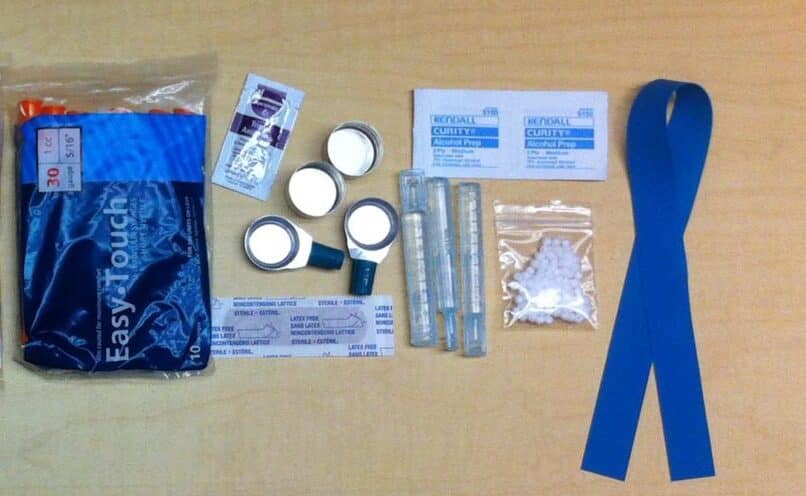A syringe service program in Fargo, North Dakota, has narrowly survived a vote after coming under attack. On November 25, local lawmakers debated whether or not to keep the city’s only harm reduction program open. A city commissioner has been claiming that the service is responsible for an increase in discarded syringes in public spaces.
Fargo’s one syringe service program (SSP) operates at the Harm Reduction Center downtown. It’s run by the Fargo Cass Public Health agency, a county program. According to the city website, it provides free supplies including sterile syringes, naloxone, fentanyl test strips and sharps containers. It also makes referrals to primary care, substance use disorder treatment, behavioral health services and housing support. The city and county additionallly run a temporary shelter for unhoused people and a short-term drug detox clinic at a separate location. Another “engagement center” allows unhoused people to store belongings or get coffee and food, while a mobile outreach team seeks to build trust by meeting people living on the streets.
City Commissioner Michelle Turnberg has argued that the SSP is detrimental to the community’s health and safety, however.
“I think the negative outcomes outweigh the possible positive with the negative outcomes being tangible,” Turnberg wrote.
“Needles are found discarded haphazardly throughout the city,” she wrote in papers submitted to the city. “This is very concerning considering a child or worker cleaning up garbage could easily be stuck, and I would expect a lawsuit against the city.”
Turnberg cited a decades-old study that outlined both positive and negative potential outcomes of SSP—ignoring unequivocal evidence of their benefits, including how they reduce not only blood-borne disease transmissions and other harms, but also “syringe litter” by providing safe disposal options and conducting clean-ups.
“This NIH article explains possible outcomes … and I think the negative outcomes outweigh the possible positive with the negative outcomes being tangible … where the possible positive outcomes being a theory [sic],” she wrote.
Turnberg proposed that the city commission immediately shut down the SSP. But in its November 25 meeting, the full commission, including the mayor and four other members, voted 3-2 against the proposal, preserving the service for now. The commission heard testimony from people including local residents who supported the SSP. The audience reportedly burst into applause after the vote.
Representatives of Fargo Cass Public Health and the city commission did not respond to Filter‘s requests for comment by publication time.
In comments to local media outlet InForum, the county’s prevention coordinator Litke Sall explained that the SSP has operated for seven years. She stated that the Harm Reduction Center has helped 433 people get referrals to drug treatment in 2024, and served over 1,000 people the year prior. Sall said that in 2024 alone, program participants have averted 397 overdoses using naloxone.
The latest vote came less than a month after another proposal targeted services for vulnerable people.
Turnberg said the city has spent over $101,000 in 2023-2024 on syringes, and suggested those funds could be shifted to other uses. In response, Sall said the center’s total spending on sterile syringes across the two years was $70,000. And this money comes from the nationwide opioid settlements with pharmaceutical companies—it must be spent on certain public health uses, and can’t be diverted to a government’s general budget.
The latest vote came less than a month after another proposal targeted services for vulnerable people. On October 28, the commission voted 3-2 to continue operating its Winter Warming Program, which shelters people living on the streets in freezing temperatures. Commissioners Dave Piepkorn and Turnberg—again—voted against the program, claiming negative impacts of unhoused people on the city’s downtown.
“We have to start cleaning up this city,” Piepkorn said. “It’s turning into a craphole.”
“I would ask you not to denigrate our city, Commissioner Piepkorn,” Mayor Tim Mahoney responded, describing the downtown area as the city’s “jewel” and a model in the state.
Like most states, North Dakota has seen a rise in overdose deaths in recent years, though the numbers have dipped just lately. Fatalities increased every year since 2019, but dropped by more than half in 2023. The worst year on record was 2022, when 135 people in the state lost their lives to overdose.
Amid the recent decline, and underlining the importance of naloxone provision, the proportion of fentanyl-involved deaths has increased, from 42 percent of deaths in 2019 to 77 percent in 2023. And like everywhere else in the country, some groups are hurt far more than others. Indigenous North Dakota residents, for example, are more than seven times likelier to die of overdose than their white peers.
Twenty-nine North Dakota counties recorded overdose deaths between 2019 and 2022. The highest rates were not seen in any of the five counties with an active SSP, but in three rural counties—Sioux, Mountrail and Benson—which have no harm reduction programs.
The state government is making some investment in expanding harm reduction and drug safety. In October, the health department announced a $500,000 grant to the opioid harm reduction program ONE, run by the North Dakota State University School of Pharmacy. This money will be used to provide intervention and education for people at risk in pharmacies; increase naloxone distribution; target certain settings like home health nursing and incarcerated people; and provide opioid use disorder medications like buprenorphine and methadone.
Photograph via Boulder County, Colorado




